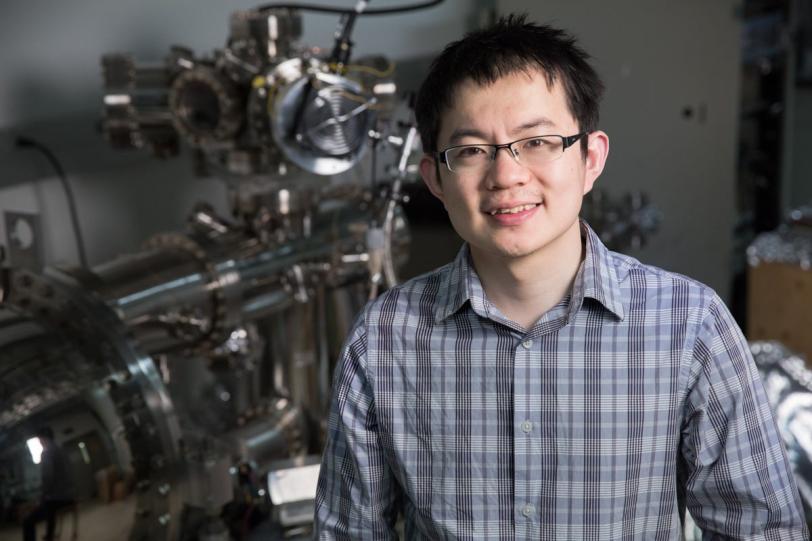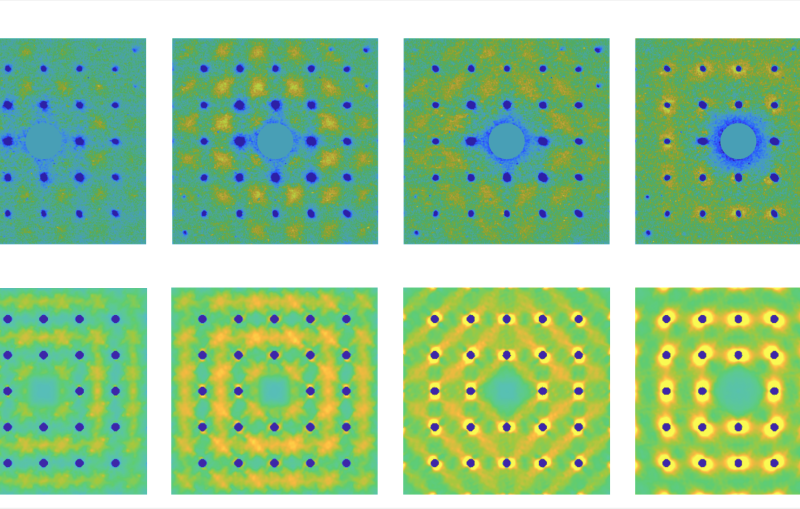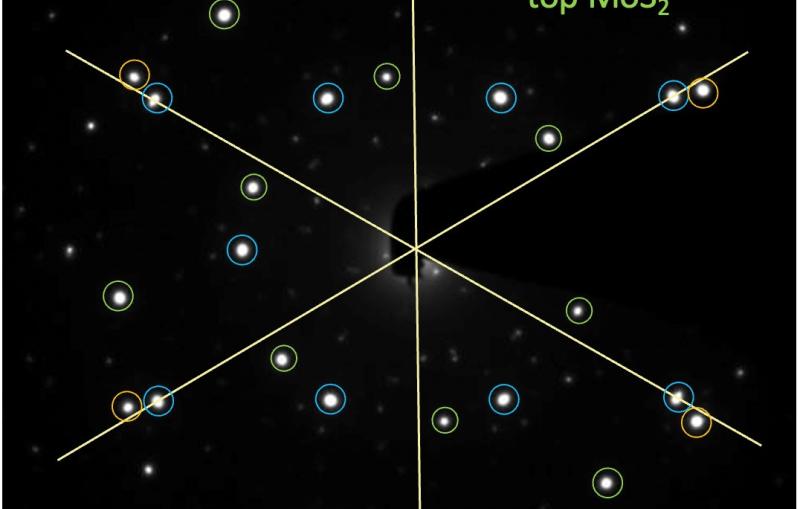Scientists Find 3-D Material That Mimics 2-D Graphene
While this particular material is very unstable, the research shows it may be possible to find a material with the properties graphene has to offer in a thicker, sturdier form that’s easier to craft into electronic devices
By Glennda Chui
Graphene – the thinnest and strongest known material in the universe and a formidable conductor of electricity and heat – gets many of its amazing properties from the fact that it occupies only two dimensions: It has length and width but no height, because it’s made of a single layer of atoms.
Now scientists have discovered a 3-D material that behaves like 2-D graphene. While this particular material is very unstable, the research shows it may be possible to find a material with the properties graphene has to offer in a thicker, sturdier form that’s easier to craft into electronic devices.
The research team, including scientists from SLAC and Lawrence Berkeley national laboratories, reported their results today in Science Express.
"Ever since graphene was isolated in 2004, researchers around the world have looked for ways to take full advantage of its many desirable properties," said Yulin Chen of the University of Oxford, who led the research at Berkeley Lab's Advanced Light Source. "But the very thing that makes graphene special – the fact that it consists of a single layer of atoms – sometimes makes it difficult to work with, and a challenge to manufacture.”
Graphene is a one-atom-thick sheet of carbon atoms peeled from a piece of graphite, which is familiar as the lead in pencils. One of its hallmarks is the weird behavior of its electrons: When confined to this thin layer of regularly spaced atoms, these lightweight particles act as if they have no mass at all. This allows them to zip through the material much faster than usual. Researchers are exploring ways to use these properties to make very fast transistors, sensors and even transparent electrodes.
A few years ago, theorists proposed that a thicker material – technically known as a three-dimensional topological Dirac semimetal – might have the same electronic properties as 2-D graphene. The race was on to see if this was true. If such a material existed, it would constitute a new quantum state of matter, defined by the unique behavior of its electrons.
Chen’s group investigated a sodium-bismuth compound, Na3Bi, that had been identified as a likely candidate by theorists Zhong Fang and Xi Dai of the Chinese Academy of Sciences, who are co-authors of the new report.
His lab at Oxford made samples of the compound and flew them to the Advanced Light Source for tests – made much more difficult by the fact that Na3Bi begins to bubble and turns to powder when exposed to air.
“This material had been produced a long time ago, but people didn’t have the powerful tools they needed to measure its electronic structure,” said Zhongkai Liu, a graduate student with SIMES, the Stanford Institute for Materials and Energy Sciences at SLAC, who performed the tests with postdoctoral researcher Bo Zhou of Berkeley Lab and Oxford.
Careful testing revealed that Na3Bi’s electronic structure does allow it to behave like graphene, Liu said. While this particular compound is too unstable to use in devices, the team is testing more stable compounds and looking for ways to tailor them for applications, he said.
Joel E. Moore, a condensed matter physicist at the University of California-Berkeley and Berkeley Lab who was not involved in the research, noted in a recent online commentary that other research groups have also been pursuing candidate compounds, with several unpublished reports of success.
The next question, he wrote, is “whether these 3-D semimetals will support as many interesting phenomena as graphene does.” He added that these materials can be a starting point for other states of matter, and that the flurry of new examples “should lead to a broader consideration by theorists of what interesting physics this class of materials might enable.”
The research team included Zhi-Xun Shen, a professor at SLAC and Stanford and SLAC’s advisor for science and technology; Zahid Hussain, senior staff scientist at Berkeley Lab; and other researchers from Berkeley Lab, Oxford and the Chinese Academy of Sciences. The work was partially funded by the U.S. Department of Energy Office of Science and the Defense Advanced Research Projects Agency (DARPA) Mesodynamic Architectures program
Citation: Z. K. Liu et al., Science, 16 January 2014 (10.1126/science.1245085).
SLAC is a multi-program laboratory exploring frontier questions in photon science, astrophysics, particle physics and accelerator research. Located in Menlo Park, California, SLAC is operated by Stanford University for the U.S. Department of Energy Office of Science. To learn more, please visit www.slac.stanford.edu.
The Stanford Institute for Materials and Energy Sciences (SIMES) is a joint institute of SLAC National Accelerator Laboratory and Stanford University. SIMES studies the nature, properties and synthesis of complex and novel materials in the effort to create clean, renewable energy technologies. For more information, please visit simes.slac.stanford.edu.
DOE’s Office of Science is the largest supporter of basic research in the physical sciences in the United States, and is working to address some of the most pressing challenges of our time. For more information, please visit science.energy.gov.





